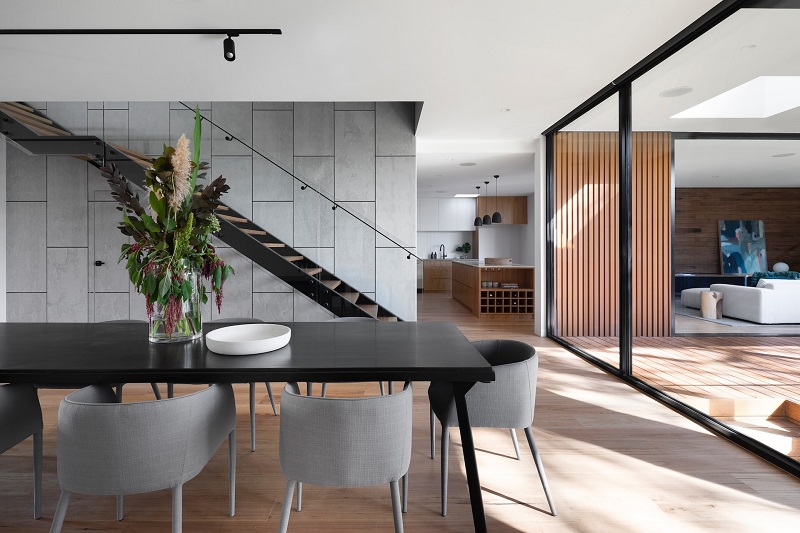7 Ways To Instantly Improve Your Architecture Design Skills

The discipline of architecture is one that is always changing as a result of new concepts, innovations, and fashions. Even if you’re a seasoned expert or a young architect, there’s always room to improve your design abilities. These seven techniques will help you rapidly boost your architecture design skills, whether you’re trying to give your projects new life or keep up with the most recent business trends.
Cultivate Your Design Thinking
Beyond aesthetics, design thinking is a method for solving problems that emphasizes user needs analysis and the development of unique, useful solutions. Practice empathizing with the users of your projects to improve your design thinking abilities. Before choosing one, engage in brainstorming sessions and consider several options. You can learn to design spaces that truly resonate with their users by tackling design difficulties with empathy and an open mind. In addition, drawing ideas from disciplines other than architecture, such as psychology and anthropology, can offer novel viewpoints that guide your design-thinking procedure.
Study the Masters and Diverse Styles
Architectural masterworks from numerous periods and locations can be studied to get significant insights into various design ideas and styles. Examine famous buildings designed by Le Corbusier, Zaha Hadid, and Frank Lloyd Wright. You’ll gain a greater comprehension of spatial compositions, material uses, and design philosophies by deconstructing their creations. This information can motivate you to try out numerous aesthetics and incorporate elements from many eras into your own works. Additionally, seeing architectural sites in person and going to exhibits helps deepen your awareness of architectural history and how it has influenced modern design.
Embrace Continuous Learning

The value of ongoing education cannot be emphasized in the constantly changing field of architecture. It’s crucial to stay current with design trends, products, and building methods. Enroll in workshops, seminars, and online courses that address a variety of subjects, from parametric architecture to sustainable design. Mastering new software is also crucial. For instance, you can learn Rhino 7, a versatile tool for 3D modeling that can drastically improve your design efficiency. Furthermore, engaging in professional networking with other architects and going to industry conferences can expose you to many points of view and promote a culture of lifelong learning.
Enhance Your Communication Skills
In architecture, effective communication is crucial. The success or failure of a project depends on your ability to communicate your design concepts to clients, contractors, and team members. By producing appealing verbal and visual presentations that highlight the most important features of the layout, you can improve your communication abilities. To express your ideas, use tools like sketches, renderings, and diagrams. Collaboration is encouraged by effective communication, which also guarantees that your vision is accurately transferred into the finished physical environment. Additionally, actively seeking criticism on your communication style from mentors and peers will help you improve your delivery and guarantee that your message is clearly communicated.
Embrace Sustainability and Technological Advancements
Sustainability is not just a catchphrase in today’s architectural world; it is a fundamental philosophy. Sustainable design principles improve the quality of your projects overall while also being good for the environment. Keep up with the most recent developments in energy-saving technologies, green building certifications, and sustainable materials. By using these components in your designs, you demonstrate your dedication to producing environments that are both practical and environmentally beneficial. The sustainability quotient of your architectural projects can also be increased by working with specialists in environmental design and renewable energy.
Foster Cross-Disciplinary Collaboration

Your architectural projects can be substantially enhanced by teaming up with experts from other fields, such as urban planning, engineering, and interior design. Each discipline offers a distinct viewpoint to the table, resulting in creative and comprehensive solutions. Participate in workshops or collaborative projects that span disciplines to learn more about various facets of the built environment. Working with professionals from diverse fields forces you to think creatively and pushes the limits of your design abilities. In addition, building trusting relationships with cross-disciplinary partners encourages a culture of reciprocal learning and can result in architectural solutions that are more thorough and well-rounded.
Embrace Technology as a Creative Tool
Technology has become an essential component of architectural practice in the modern era. Accept the use of digital tools and software for improving your creative process as well as for practical purposes. The possibilities of your ingenious creativity can be pushed with the use of tools like parametric design software. Explore virtual reality and augmented reality software to see your creations in realistic settings. By incorporating technology into your design process, you can create previously unimaginable new possibilities and access cutting-edge design solutions.
Architecture is a broad field that necessitates ongoing development and adaptation. Following these seven tactics will enable you to quickly improve your design abilities. You’ll be well on your way to becoming a more talented and adaptable architect by continuously putting these strategies into practice. Keep in mind that improvement is a journey.